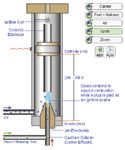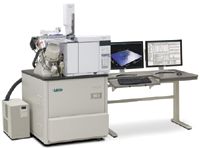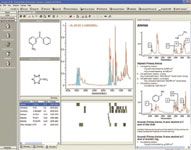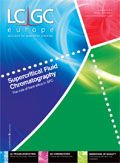Digital Update
Digital Products
Continuing professional development for chromatographers
CHROMacademy is a chromatography e-learning programme that provides continuing professional development for chromatographers to make them more effective in the work place. There are over 3000 pages of e-learning on HPLC, GC, MS and Sample Preparation techniques to improve practical knowledge for the absolute novice (What is Chromatography?) to the expert who needs a refresher in a particular topic (Advanced Topics in LC-MS Spectral Interpretation, for example). The site can be also used for induction training or programmed learning activities and there are tutorials and assessments built into all learning modules to check progress. The first official webinar: Essential Guide 1: Split /Splitless Injection for Capillary GC attracted 568 visitors. The recorded session is available via the CHROMmunity at http://chrommunity.chromacademy.com (under the WEBCASTS Tab). Other Webcasts include Essential Guide 2: Mobile Phase Optimization Strategies for Reversed Phase HPLC; Essential Guide 3: Understanding and Optimizing Detectors for Capillary GC; and Essential Guide 4: Mobile Phase Optimization Strategies for Reversed Phase HPLC.

Updated digital platforms
ChromaTOF 4.30 is now available for all LECO instrument systems.New features are reported to include variable modulation times within each GC×GC chromatographic run for a more specialized analysis, which maximizes resolution in both the first and second dimensions. Also available is the LECO/Fiehn metabolomics library with over 1100 spectra of 700 unique metabolomics for metabolite identification of the most complex samples. Fully integrated within the system, the library works seamlessly to search for analyte matches without the need for importing or exporting data.

Chromatography software
DataApex has announced the release of Clarity version 3.0. This version is reported to bring more than 100 enhancements that increase users' comfort and add new functions, including new calibration and sequence options (such as calibration bracketing, standard addition calibration), new export into Excel format, or enhancement to GLP requirements. New control modules have been introduced so that the software can now control more than 270 different instruments from one environment. Users can download the latest version from DataApex webpages. The detailed list of changes in the new version is available from the company's webpages for easy navigation in the new version.
Integrated software and database
Bio-Rad has released a fully integrated software and database package to provide multiple tools, including database building and management, search, analysis, structure drawing and reporting within a single user interface. According to the company, the KnowItAll Informatics System 8.2 includes a series of new report templates for more efficient output and improved design and a function to preview chromatograms and spectra to be used for searching, interpretation or database creation before the file is actually opened. The informatics system is reported to offer a fully integrated environment with flexible and expandable software and database solutions for chromatography, MS, cheminformatics; chemometrics, metabolomics and more.

Regulatory Deadlines and Supply Chain Challenges Take Center Stage in Nitrosamine Discussion
April 10th 2025During an LCGC International peer exchange, Aloka Srinivasan, Mayank Bhanti, and Amber Burch discussed the regulatory deadlines and supply chain challenges that come with nitrosamine analysis.












